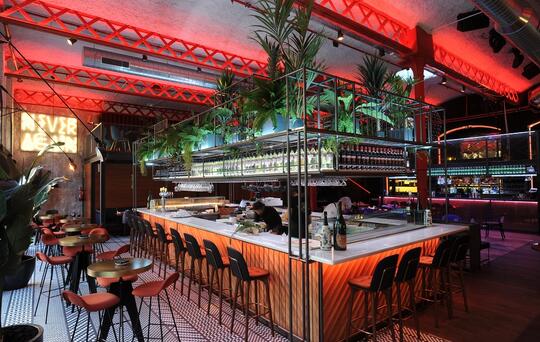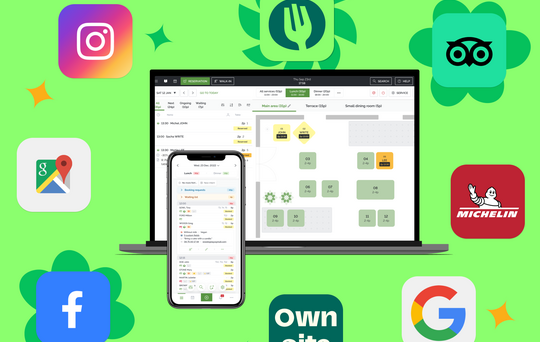Reduce Restaurant No-Shows: Proven Strategies That Work

Manager, is equipped with effective tools to tackle no-shows that have already helped partner restaurants achieve an impressive no-show rate of 0.8%.
Understanding the reasons why restaurant no-shows happen is the key to effectively preventing them. Some customers forget their reservations without reminders, especially when made well in advance. Others may not show up due to genuinely unforeseen circumstances, such as personal emergencies, or sudden work commitments that prevent them from cancelling. Some customers will just simply change their minds and not inform you.
Unfulfilled reservations often stem from poor communication between restaurants and customers. If reminders are not sent promptly or booking details are unclear, customers can easily become misinformed, leading to no-shows.
Additionally, restaurants that lack a clear reservation and cancellation policy are more likely to experience this issue. Without consequences for missed reservations, customers may not feel compelled to honour their scheduled bookings.
Why Do Restaurant No-Shows Happen?
Restaurant no-shows often occur for several reasons, including simple forgetfulness, last-minute schedule changes, or poor communication between the restaurant and the guest. When booking reminders aren’t sent in a timely fashion or details aren’t clear, customers may unintentionally miss their reservations.
Additionally, a lack of perceived commitment—such as no reservation deposit or cancellation policy—can make customers feel less obligated to follow through on their booking. Understanding these common causes allows restaurateurs to implement targeted strategies, such as automated reminders or clear cancellation policies, to reduce no-shows, protect their business, and ensure seats remain filled throughout the year.
Impact of No-Shows on Restaurant Profitability
Restaurateurs face potential revenue losses when reserved tables sit empty. Losing out on both the expected income from booking customers and the chance for walk-ins to fill those empty spots can result in revenue losses between 5% and 20%**. This problem affects every type of restaurant, from independent neighbourhood favourites to large groups and national chains.
No-shows in restaurants also create logistical problems, including challenges in stock management. Unfulfilled reservations often lead to substantial food waste. As a restaurant owner, you have to plan and manage your inventory based on the expected number of customers, and when they don’t show up, it results in additional costs and lost revenue.
But that’s not all: no-shows can cause disorganisation within restaurants, impacting both staff and facility management. Restaurateurs frequently anticipate the number of expected guests and plan staff rotas accordingly. When no-shows happen, it can lead to overstaffing, with more personnel on-site than needed to handle customer footfall that never materialised. This overstaffing becomes a significant cost for restaurateurs, who are obliged to pay additional staff, once again cutting into profit margins.
Practical Tips for Reducing Restaurant No-Shows
Reducing restaurant no-shows is all about clear communication and ensuring you take proactive measures to mitigate the issue before it arises. Simple strategies like sending manual reminders via SMS or email can help jog customers’ memories and reduce forgotten bookings.
It can happen to anyone, after all. Establishing a clear cancellation policy is also vital. Implementing consequences for missed bookings can encourage customers to take their reservations more seriously.
Offering a flexible rescheduling option can accommodate last-minute changes to plans while ensuring your customers know you understand and care about them. Combined, these strategies can significantly minimise the impact of no-shows and keep your tables filled.
Encourage Prepayment for Reservations
Asking for a deposit or prepayment is a great way to reduce restaurant no-shows while demonstrating your commitment to offering an exceptional experience.
High-end restaurants, or those with set menus, can benefit from this, as doing so ensures your time and preparation are respected while giving customers an incentive to stick to their plans. Think of it as a small down payment on a memorable night out.
Improve Customer Communication
Let’s face it—life gets busy, and reservations can easily slip through the cracks. Proactive communication can save the day! Send automatic reminders or confirmation messages via email or text to nudge customers in the right direction. Include all the need-to-know details like date, time, and any special instructions. A friendly, "We can’t wait to see you!" goes a long way in making sure your customers feel valued and remember to show up.
Create a Cancellation Policy for No-Shows
It’s also important to set some boundaries—kindly, of course! A clear cancellation policy can encourage customers to take their bookings more seriously. Whether it’s requiring notice 24 hours in advance when cancelling or introducing a penalty for those done last-minute, this policy ensures you are upfront with your expectations.
Done right, it helps you avoid empty seats while showing that you recognise genuine emergencies. It’s all about striking the perfect balance between business and customer care.
Try TheFork Manager today
How to Reduce No-Shows with TheFork Manager
TheFork Manager is an all-in-one restaurant management tool specifically designed to help you:
-
Centralise reservations
-
Maximise occupancy rates
-
Communicate with clients
-
Increase customer loyalty
TheFork Manager can also help restaurateurs cut no-show rates to as little as 0.8% with a series of effective tools.
1. Activate the Credit Card Guarantee
Requesting a credit card guarantee is a simple and effective way to reduce unfulfilled bookings. When customers make a payment in advance or provide their bank details upfront, they are more likely to honour their reservations as they know they will be charged if they fail to do so.
With TheFork Manager, you have all the tools to customise this feature according to your business needs. You can decide how much to charge, how many people the credit card guarantee applies to, and set the cancellation period before any charges are incurred. Activating a credit card guarantee decreases no-shows by an impressive 65% and has an added benefit for restaurateurs—you’ll be compensated even if the customer doesn't show up.
2. Send Reservation Reminders for Free
With TheFork Manager, restaurateurs can send automatic reservation reminders via email and/or text message to reduce the number of no-shows. You can send a reminder a few days before the reservation date. The costs of doing this are completely covered by TheFork and will not be billed to you!
3. Allow Your Customers to Cancel Reservations Easily
Having a quick cancellation process can help you reduce the number of no-shows at your restaurant. When you send confirmation and automatic reservation reminders with TheFork Manager, your customers can easily cancel their booking with just one click if they can’t make it.
4. Implement a Waiting List
With TheFork Manager, you can create a waiting list for customers without reservations. This way, if a reserved table goes unfulfilled, you can assign it to a customer on the waiting list and maximise your occupancy rate while minimising revenue losses.
5. Identify Customer Reliability
With TheFork Manager, you can assign customers a reliability score based on their previous bookings. The index—represented by a green, orange, or red dot—will help you see if a customer is likely to be a no-show. If the reliability index is low, you can take precautionary measures, like sending reminders or calling them to curb unfulfilled reservations. What’s more, to highlight the impact of no-shows on restaurants, TheFork deactivates users who accumulate four no-shows within a 12-month period.
Ready to reduce no-shows in your restaurant? Ask our team of experts for advice and assistance implementing TheFork Manager's various tools.
*Data observed on TheFork reservations made with a bank card imprint in France in September 2022.
**TheFork 2022 Article, link















